When you're taking azilsartan for high blood pressure, skipping your regular checks is like driving with your eyes closed. You might feel fine, but your numbers could be creeping up - and that’s when things get dangerous. Azilsartan works by relaxing your blood vessels so your heart doesn’t have to work as hard. But it doesn’t fix everything. Your body changes. Your diet shifts. You might start sleeping less or gain a few pounds. All of that affects how well the drug works. That’s why checking your blood pressure regularly isn’t optional - it’s your lifeline.
What Azilsartan Actually Does
Azilsartan is an angiotensin II receptor blocker, or ARB. It blocks a hormone that narrows your arteries. When that hormone is blocked, your blood vessels relax, and your pressure drops. Most people start seeing results within two weeks. But here’s the catch: azilsartan doesn’t cure hypertension. It only manages it. If you stop checking your numbers, you won’t know if the dose still fits your body’s needs. A 2023 study in the Journal of Clinical Hypertension showed that nearly 30% of patients on ARBs like azilsartan had uncontrolled blood pressure after six months - not because the drug stopped working, but because they didn’t adjust their monitoring habits.
Why Your Blood Pressure Isn’t Static
Think of your blood pressure like a car’s fuel gauge. It doesn’t stay the same just because you filled the tank last week. Your salt intake, stress levels, sleep, even the weather can shift your numbers. In Durban, where humidity and heat spike in summer, many people see their pressure rise even if they’re taking their meds exactly as prescribed. Weight gain, new medications, or even a cold can change how your body responds to azilsartan. One patient I spoke with, a 58-year-old teacher, noticed her readings climbing from 128/82 to 145/90 over three months. She blamed stress - but her doctor found she’d started taking a common herbal supplement for energy that interfered with azilsartan. Regular checks caught it before she had a stroke.
How Often Should You Check?
When you first start azilsartan, your doctor will want to see your numbers every two to four weeks. That’s to make sure the dose is right. Once you’re stable, most guidelines suggest checking at home at least once a week. But if you’re over 65, have diabetes, or kidney disease, you should check twice a week. Home monitoring is more accurate than clinic visits because it avoids white coat hypertension - where your pressure spikes just because you’re in a medical setting. A 2024 meta-analysis in The Lancet found that patients who monitored at home had 40% better long-term control than those who only checked at the doctor’s office.
What Numbers Should You Watch For?
Your target blood pressure while on azilsartan is usually below 130/80 mm Hg. That’s the standard for most adults with hypertension, especially if you have other risks like diabetes or heart disease. But don’t panic if you see a single high reading. One spike doesn’t mean the drug failed. Look at trends. If your average over three days is above 140/90, it’s time to call your doctor. If your systolic (top number) hits 180 or higher, or your diastolic (bottom number) hits 110 or more, that’s a hypertensive crisis. Don’t wait. Get help immediately.
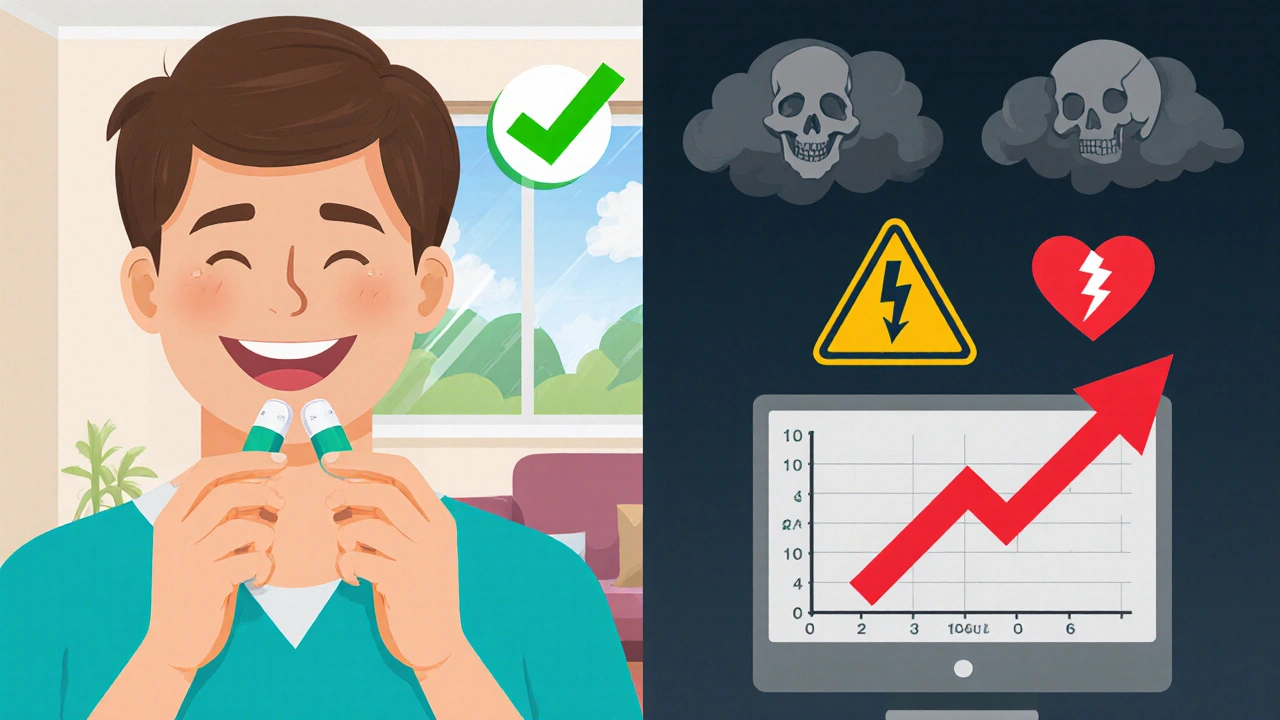
How to Monitor Correctly at Home
Not all home monitors are equal. Use an upper-arm cuff device - wrist and finger monitors are unreliable. Make sure it’s validated by the European Society of Hypertension or the British Hypertension Society. Sit quietly for five minutes before measuring. Keep your feet flat, back supported, arm at heart level. Take two readings one minute apart, and write them down. Do this at the same time each day, preferably in the morning before medication and again in the evening. Many people forget to log their numbers, so use a simple notebook or a free app like Blood Pressure Monitor or CardioMio. Your doctor needs this data to make smart decisions.
Signs Azilsartan Might Not Be Working
Feeling dizzy? Headaches? Swelling in your ankles? These aren’t just side effects - they’re red flags. Azilsartan can cause low blood pressure if you’re dehydrated or taking diuretics. If your pressure drops too low - below 90/60 - you might feel faint, especially when standing up. That’s not normal. Also, if you notice your urine output dropping, your skin turning yellow, or your potassium levels rising (which can cause muscle cramps or irregular heartbeat), these could mean your kidneys are struggling. Azilsartan is processed through the kidneys. If they’re not working right, the drug can build up. Regular monitoring helps catch these problems before they become emergencies.
What Happens If You Skip Monitoring?
Ignoring your blood pressure numbers while on azilsartan is like ignoring a check-engine light. You might keep driving - until the engine blows. Uncontrolled hypertension silently damages your heart, kidneys, brain, and eyes. Over time, it can lead to heart attack, stroke, kidney failure, or vision loss. In South Africa, stroke is the second leading cause of death. Many of those cases happen in people who were on medication but stopped tracking their progress. One 2024 study in Cape Town found that 62% of stroke patients on antihypertensives hadn’t checked their pressure in over six months. They thought the pill was doing its job. It wasn’t.
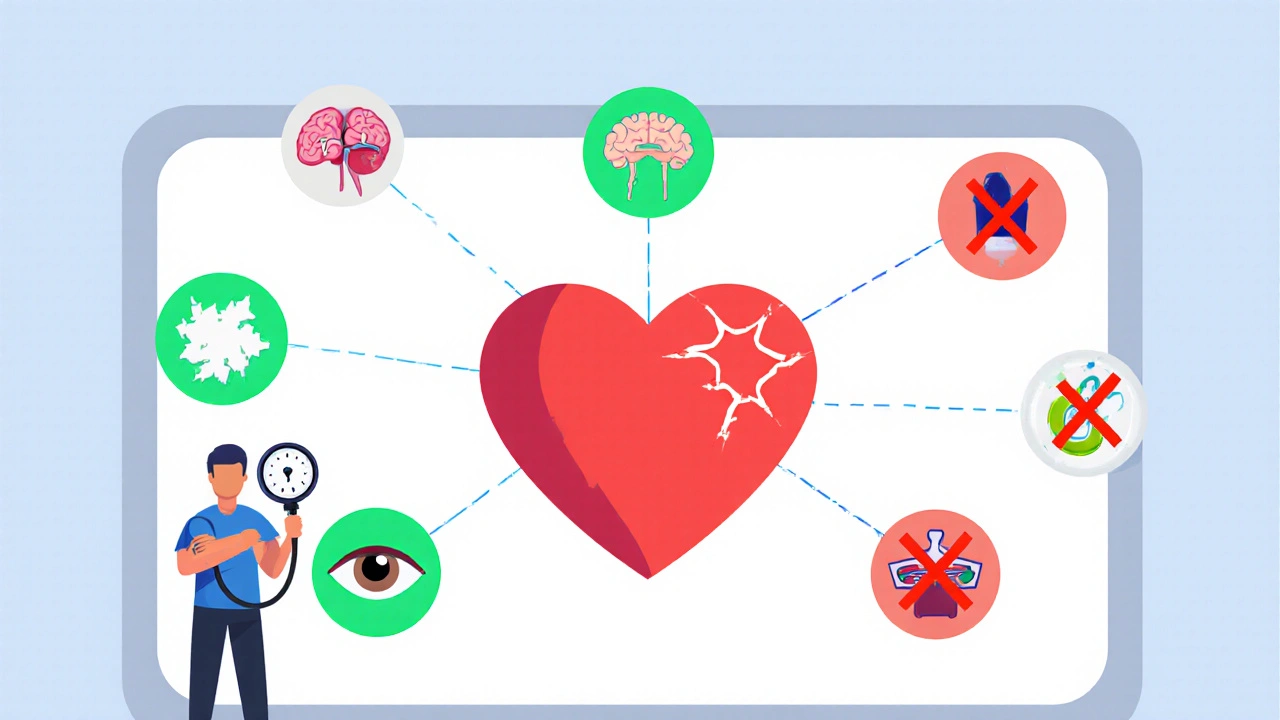
When to Call Your Doctor
You don’t need to panic over every number. But here’s when to call:
- Your average readings are above 140/90 for three days in a row
- Your systolic pressure hits 180 or higher, even once
- You feel chest pain, shortness of breath, or sudden confusion
- You notice unexplained swelling, fatigue, or reduced urination
- You’ve started a new medication or supplement
Don’t wait for your next appointment. Call your doctor or pharmacist. They might adjust your dose, check your kidney function, or suggest a different medication. Azilsartan isn’t the right fit for everyone - and that’s okay.
What to Avoid
Some things make azilsartan less effective - or more dangerous. Avoid:
- High-salt diets (more than 1,500 mg per day)
- Alcohol - even one drink a day can raise pressure
- NSAIDs like ibuprofen or naproxen - they can damage kidneys and block azilsartan’s effect
- Herbal supplements like licorice root, ginseng, or St. John’s wort - they interfere with blood pressure meds
- Skipping doses or doubling up to "catch up" - this causes dangerous swings
Always check with your pharmacist before taking anything new - even over-the-counter cold meds. Many contain decongestants that spike blood pressure.
Real-Life Example: Maria’s Story
Maria, 62, from Pietermaritzburg, started azilsartan after her first stroke. She felt fine, so she stopped checking her pressure after three months. She didn’t tell her doctor. Six months later, she collapsed at the grocery store. A second stroke. When she woke up, her doctor showed her her home monitor logs - she’d been averaging 155/95 for months. She thought the pill was enough. It wasn’t. She now checks her pressure every morning and keeps a log. Her numbers are stable. She’s back gardening. She says: "I thought I was doing everything right. I didn’t know checking my numbers was part of the treatment. Now I know. I don’t skip it. Ever."
Final Thought: Monitoring Is Part of the Medicine
Azilsartan is powerful. But it’s not magic. Your body is always changing. Your treatment must change with it. Monitoring your blood pressure isn’t a chore - it’s your way of staying in control. It gives you power over your health. It tells you when to push harder, when to rest, when to call for help. Don’t let a pill be the only thing keeping you safe. Stay informed. Stay checked. Stay alive.
Can I stop taking azilsartan if my blood pressure is normal?
No. Normal blood pressure while on azilsartan means the medication is working - not that your condition is cured. Stopping suddenly can cause your pressure to spike dangerously high within days. Always talk to your doctor before making any changes to your dose or stopping the drug.
How long does it take for azilsartan to lower blood pressure?
Most people see a drop in blood pressure within one to two weeks. But full effects can take up to four weeks. That’s why doctors wait before adjusting the dose. Don’t assume it’s not working if you don’t feel different right away. Use your monitor to track the numbers, not how you feel.
Can I use a wrist blood pressure monitor with azilsartan?
Not reliably. Wrist and finger monitors are often inaccurate because they’re sensitive to arm position and movement. For azilsartan users, consistent, accurate readings are critical. Use an upper-arm cuff device that’s been validated by the European Society of Hypertension or the British Hypertension Society.
Does azilsartan cause weight gain?
Azilsartan itself doesn’t cause weight gain. But if your blood pressure isn’t controlled, your body may retain fluid, making you feel bloated. Also, some people eat more or move less after being diagnosed with hypertension - which leads to weight gain. Monitor your weight along with your blood pressure. A sudden increase of more than 2 kg in a week could signal fluid retention - a sign your treatment needs adjustment.
What should I do if I miss a dose of azilsartan?
If you miss a dose, take it as soon as you remember - unless it’s close to your next scheduled dose. Never double up. Missing one dose won’t cause a spike, but skipping regularly can. Set phone reminders or use a pill organizer. Consistency matters more than perfection.
Is it safe to drink coffee while on azilsartan?
One or two cups a day is usually fine. But caffeine can temporarily raise blood pressure, especially if you’re not used to it. If you drink coffee, monitor your pressure before and after to see how your body reacts. If your systolic number jumps more than 15 points, consider cutting back or switching to decaf.
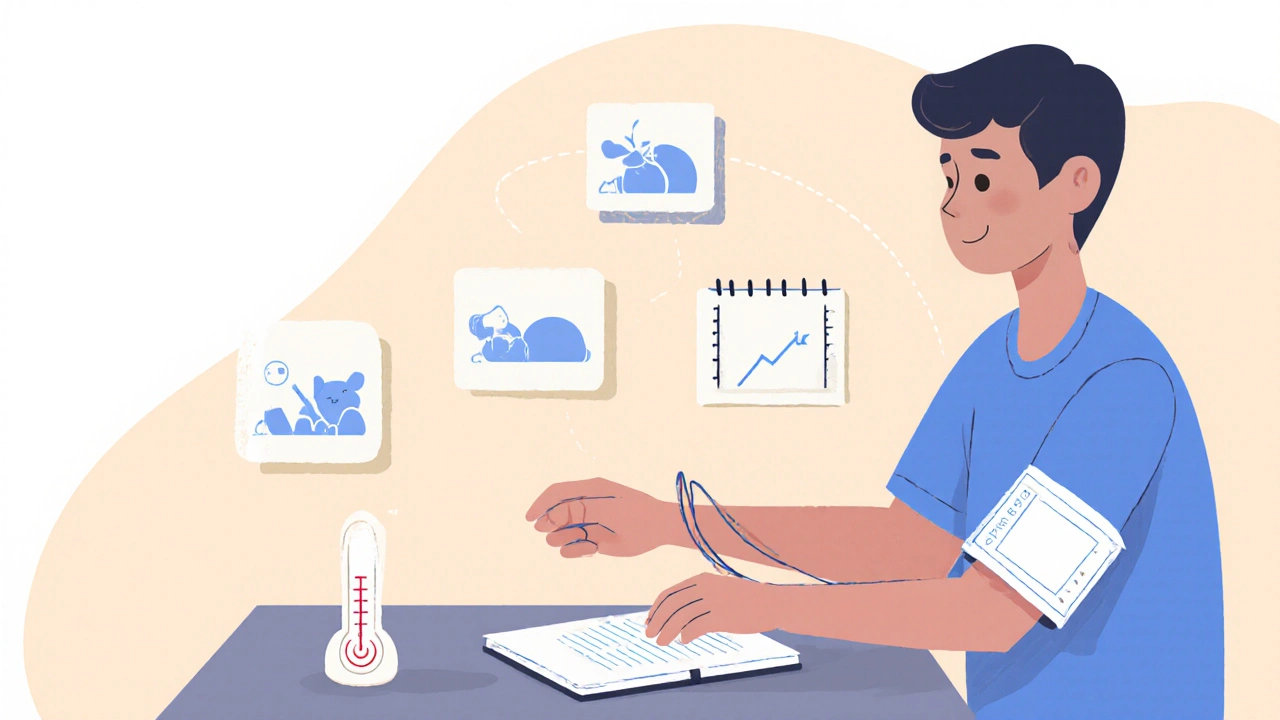

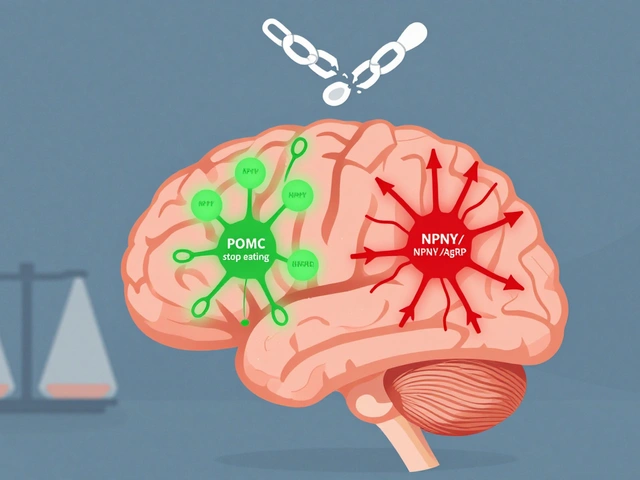


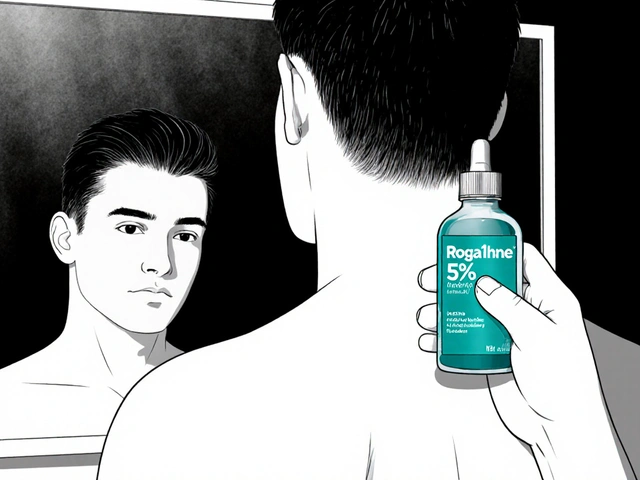

Wow. Just... wow. Someone actually wrote a whole essay on not being an idiot with their blood pressure meds? I’m shocked. I thought azilsartan was supposed to be magic fairy dust you swallow and forget about until you’re in the ER with a stroke. Thanks for the reminder that your body isn’t a toaster that just works forever without checking the crumbs.
Bro in India we call this ‘dil ka pressure’ and everyone ignores it till they collapse at chai stall 😅 My uncle took his meds but never checked - thought the blue pill was his superhero cape. Then one morning he woke up with half his face drooping. Now he logs his BP like it’s his daily yoga routine. Real talk: meds are just half the battle. The other half? You. Not the doctor. Not the app. YOU.
I’ve been checking mine every morning with my validated cuff. It’s not glamorous. But it’s the only thing keeping me out of the hospital. I don’t need a lecture. I just needed to know I wasn’t alone in doing this boring thing.
Look I read this whole thing and honestly? Most of this is common sense. But I’m just here wondering why the hell the author didn’t mention that 80% of home monitors are junk bought off Amazon. I got one that says I’m hypertensive every time I sneeze. You need to calibrate it with your doc’s machine or you’re just gambling with your life. Also why is there no mention of salt substitutes? They’re worse than table salt. But sure. Keep blaming the herbal tea.
Let me get this straight: You’re telling me that after 50 years of pharmaceutical propaganda, we’re still pretending that a single drug can outmaneuver human biology? Azilsartan doesn’t fix anything. It just masks symptoms while the system decays. And yet, you want us to trust a $30 monitor bought from a website that sells ‘quantum healing’ bracelets? This isn’t medicine. It’s performance art for the anxious middle class. You’re not managing hypertension. You’re performing compliance. And the real crisis? The fact that we’ve outsourced our health to pills and pixels.
so azilsartan is like a magic bullet? lol. i bet the author gets kickbacks from the drug co. also why is everyone so obsessed with numbers? i feel fine. why do i need a machine to tell me what my body already knows? also i heard the FDA is hiding the truth about ARBs and kidney damage. you think they want you to check your bp so you dont find out they lied? just sayin.
This was incredibly helpful. I’ve been skipping checks because I felt fine. Now I know that’s exactly when it’s most dangerous. I’m starting tomorrow. Thank you.
Every single word of this is a government-controlled narrative. Blood pressure monitors are calibrated to inflate panic. The real cause of stroke? Fluoride in the water. The FDA banned potassium supplements because they don’t want you to cure hypertension naturally. Azilsartan is a Trojan horse. Your doctor is paid to push it. Your home monitor? A surveillance tool. Don’t believe the hype. Stop checking. Stop trusting. Live free.
Y’all need to stop being scared of your numbers and start being proud of your habits. You’re not just taking a pill - you’re choosing to show up for yourself every damn day. That’s strength. That’s discipline. That’s worth celebrating. 🙌 Keep logging. Keep showing up. You’re doing better than you think. One reading at a time.
Yeah yeah, check your BP. I checked mine once. Got a 150/95. Then I drank a beer and checked again. 145/90. So I guess the beer helped? Anyway, I’m still alive. So maybe the whole thing’s overblown.
It is, regrettably, an empirical observation that the contemporary medical-industrial complex has successfully engineered a paradigm wherein patient autonomy is subordinated to algorithmic surveillance. The prescription of azilsartan, while pharmacologically sound, is inextricably entangled with a broader apparatus of behavioral control, wherein the patient is coerced into perpetual self-quantification under the guise of therapeutic efficacy. The validation of home-monitoring devices by the European Society of Hypertension, while ostensibly evidence-based, constitutes a form of institutional epistemic hegemony. One must therefore question: Are we managing hypertension - or are we being managed by it?